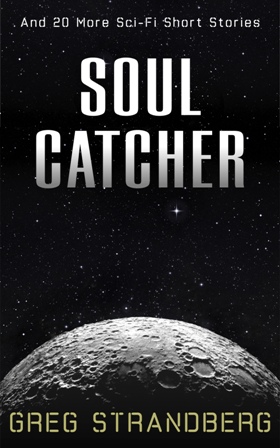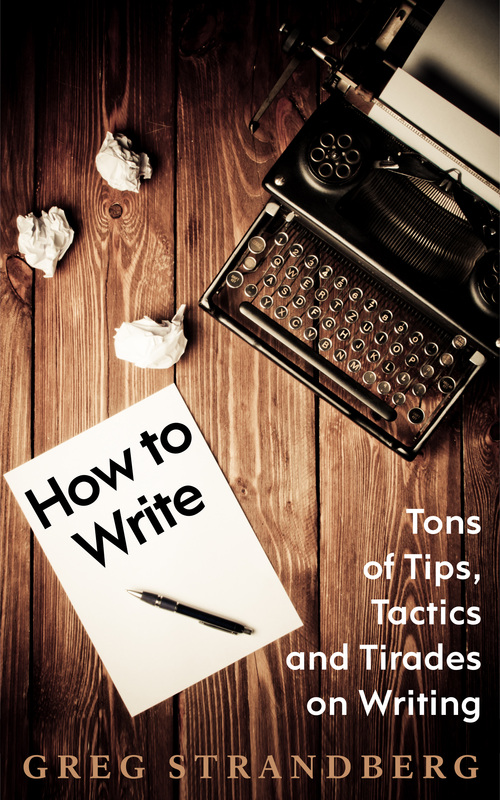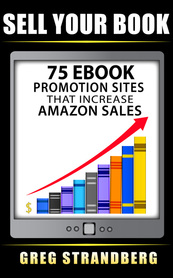For awhile there I was posting everyday. I did that with both blogs on this site, although the Montana blog only has about 55 posts.
Posting everyday allowed me to boost the traffic to my sight quickly, and I’ve had pretty steady numbers ever since, around 500 unique visitors a day. Most of the time it still seems like I’m writing to a brick wall, however, and that’s one of the things that makes it so difficult for a lot of people to continue a blog all the way up to 100 posts.
But as this post proves, it can be done. And you can get there a lot faster, too; besides getting this blog to 100 posts I got my ESL blog to 100 posts about 2 months ago. And don’t forget that Montana blog, however small it may be.
So if you’d take all those posts that’d put me well over 200 posts in 8 months. Not too shabby.
So how can you do it too? What are all the easy tips, trick, cheats, and shortcuts you ask? Well, I’m not sure you’ll be too thrilled, but here are some things that helped me.
Religiously Track Word Counts
Here’s what my word count spreadsheet looks like:
When I first started color-coding I did so because I had a lot of posts written and with the word counts showing, but I wasn’t sure if I’d posted them yet or not. That’s why you see those early entries in yellow. That yellow color meant that post had been posted and wasn’t still sitting in the folder.
I changed this by only giving posted posts a number. All the other files in my folder don’t have numbers and show up at the end of the list. As I got more posts I realized I needed more colors, and I add new ones as new topics develop and get enough posts to come out of the miscellaneous category.
This is what serious writers do. I do this because people pay me thousands of dollars each month to write for them and I need to keep things in order. It’s a system that works really well for me, and one that I continually develop and tweak so that it’ll work better.
Create Files Ahead of Time
Even better, start a 101 list on your computer and add titles to it periodically. Getting 10 each day shouldn’t be a problem. Come back a week later and prune your list down to about half, using only those topics that are relevant and haven’t been talked to death.
Now you’ve just got to put that list into documents. Save each title in its own MS Word document or whatever you use. Seeing your future blog posts like that makes it a lot easier. Here’s what my folder for this writing blog looks like:
Add Your Pictures Ahead of Time
First, when you see the pictures while you’re writing you can write more. Take that word count picture above. I can look at that while typing words and I’ll get more words because of it. This might only be 50 to 100, but when you’re posting on a daily or weekly basis this can add up.
Next, it gives me a feel for where I want to put that picture in my post, and how I want it to display. Do I want it after this paragraph, or on the side there? Should it be centered by itself or inserted into the text? I’m a firm believer that when the time to post comes all of the thought processes should have been done earlier.
Remember, lots of people click on a blog post and scroll all the way down before they even start reading, the better to get a feel for what’s ahead of them. If what they see looks visually appealing, and perhaps more importantly, like something they can actually get through, then half your work is already done.
Do a Little Everyday
 What Would Ben Do?
What Would Ben Do? I have the same problem with my blog. I love the idea of doing a little everyday, but this doesn’t always happen.
So how do you make it happen? By following some of the simple steps above. Start by using that notepad to record your titles. Get those documents saved, and then every once in a while open one up and pound out some words on it.
Try a strategy I use. I like to smoke so I’ll often go outside several times a day. Sometimes before I do this I make myself open up something that I haven’t worked on yet and I’ll do a little bit. This might only be 100 words, which is usually my goal, but I’ll find that I get up to a few hundred. (This post was started this way).
You don’t need to take up smoking to do this. Think about the times you get up to take a drink of water, walk around, go to the store, or make dinner. Before you get up to do those things try opening one of your files and doing just a little; I’m willing to bet you get a lot more than you think!
Take Days Off
In February 2013 I was still living in China. My mom was visiting me one week and we were just about to go out to dinner or something. I was busy on the computer and generally holding everyone up because I was watching a video. That video was one of those Empower Network videos, you know, the one where the guy’s standing by a whiteboard on a beach or something?
Well, I’ll say right now that I think the Empower Network is rubbish, and I was only looking at that video because an employer wanted me to. But something that came through about 30 minutes into it has stuck with me ever since.
The guy was talking and he said, “challenge yourself to post everyday for 90 days.” At the time I only had one site, my ESL site, and I hadn’t posted to it since October, 5 months before! I liked the idea of that challenge and took the man up on it.
Well, I did real well until I got up to post #72, and then I missed a day because my internet went out. I can’t remember if I had the next day’s article written, but I probably did. After that the precedent had been set and let’s just say I didn’t get those next 28 posts out in 28 days. But I did get them out within 40 to 50 days and got up to my 100th post on that blog on July 9, 2013, roughly 5 months after starting with my goal. And don’t forget that I was also posting daily to 2 other blogs, this Writing Blog and my Montana Blog. It can be done!
Lose It Sometimes

So what does this mean, exactly, ‘lose it?’ Well, I mean you should put out posts that you think will anger your readers, alienate your audience, and possibly lower your rankings and all the goodwill you’ve built up.
We call this risk. If you’re not doing it regularly with your blog then chances are you’re not seeing a whole lot of interest in what you’re doing. Anyone can tell me 100 great publishing tips, and there are hundreds if not thousands of blog pots out there detailing just that. But few blogs will tell you 100 great publishing tips that will anger your readers, lose your audience, and kill your sales…all while getting you right to the top of Amazon!
Damn, that sounds good and I think I might have to write that one!
Don’t Worry
Look at it like this: let’s say you’ve got your blog up to 50 or 60 posts and now you’ve run out of things to say. First of all, congratulations! People usually run out of things to say a helluva lot earlier than that! But really, what’ll happen if you worry too much? You’ll probably stop posting entirely and your blog will become just another discarded carcass on the side of the information superhighway.
Instead why not throw some of those ‘don’t worry’ posts out there that really tell what you’re thinking, show your passion, and maybe even generate a response? And remember, that post will eventually sink down to the bottom of your blog, right next to all those ones that you spent so much time on but people don’t read.
Choose Your Target
When you know who you’re writing to it makes things a lot faster. The problem that most blogs have, however, is that they don’t know who they’re writing to. This is an acute problem with new blogs, but one that can be overcome.
My target audience with this writing blog is people who are interested in self-publishing, SEO, content marketing, and blogging. It’s kind of a wide net to cast out, and I’ve narrowed it. I also narrow my focus onto just one of those areas for many posts. And I always use the word ‘you’ because I’m speaking to ‘you’ right now. Yeah, that means you there sitting in that chair reaching for that bag of (insert favorite snack here).
Don’t Expect Comments
 Brick walls don't leave comments
Brick walls don't leave comments This is your main audience and probably the only ‘person’ that will read your posts. Most blogs won’t get much traffic until they get a lot of posts, maybe a few months worth. And that’s why so many bloggers give up.
The thing is, don’t expect a lot of people to gush all over you, and certainly don’t expect comments. I got my first comment on my very first post on this blog. It was a friend and I went without a comment for another few weeks until someone was nice enough to point out a mistake in one of my books. After that I didn’t get one for 3 more months.
Still to this day I get maybe 1 to 2 comments a week. I was pretty surprised last week when I got 1 everyday. Well, at least I’ve still got Dillinger.
Put Up Those ‘Bad’ Posts
I’ve put up some humdingers in my time. Here are a few that were on this writing blog that I kind of thought were…well, let’s just say they were rubbish, ok?
Check out my blog posts on having a writing routine. It’s not a bad post but I’m sure I could have done better.
The post I wrote on SEO and 80s movies was one I was very hesitant to put out. I’d just finished a book on SEO and this seemed a little silly. Still, it was long (1,045 words) and kind of different.
I decided to go with it. There’s never been a comment on it, but it started me in a direction that I’ve continued on, and that’s to put out content that’s different and a little out there. If you’re not coming away from this blog thinking he’s pretty crazy, but he’s got a point, then it’d probably be better to find another hangout.
My article on Google Panda’s 10-day Rollouts was another I was nervous about. I included a lot of pictures in this post and gave it a how-to feel. It probably should have been split in two, and I thought ‘maybe I shouldn’t.’ Of course I did, and people have been reading this one each month for months now.
I’ll throw one more out at you. This was my post on my first Amazon KDP Free Promo back in April. I put a lot of analysis into this post and put it out there. I thought some people would be interested, but not hundreds of people each month. Since then it’s become one of my most popular post, and it’s shown me a good direction for me to head with this blog.
The point is, even some of those posts you thought were kind of bad and that no one would be interested in, well lo and behold, some people like them! You really never can tell, so my advice would be to just put it out there and move on to the next one.
Have Regular Topics
- Monthly Reports: I started doing these in May, 2013, with a post I called A Busy April. All I did was talk about what I’d written the month before and the people I’d worked with. It was a popular post and was still being read regularly months later. I decided to make the monthly reports a regular thing, and I really enjoy them now. Plus, every month I know what my first post will be.
- Adventures in SEO: I work for a lot of people writing, mainly SEO and other internet content. I decided that I’d start writing about these ‘adventures’ on my blog. Now, perhaps that’s not the best way to get future clients, but my business has only increased. And it’ll make a helluva book in another six months.
- Fantasy Novels: Perhaps there’s some SEO types that come to this site and think, ‘What the Hell! Why’s there talk of fantasy novels here?’ Well, because I’ve written three fantasy novels and thought some people could use some help. I began by talking about How to Make a Fantasy World several months ago, stopped for awhile, and then started again. I keep it open and figure I’ll head back that way one day.
Serialize Your Blog
 Leave 'em hangin' and wantin' more!
Leave 'em hangin' and wantin' more! A good example of this also involves fantasy. I’ve done two long serials of fantasy posts on this blog, and both have been popular, especially the posts on How to Write a Fantasy Novel that Sells.
I did a long serialization on Writing a Website, and that turned into the book Write to the Top. The point is, if you can get on a long run with a single topic or idea, then chances are you can get lots of posts out of it.
Do Lists
Everyone loves them, and they’re easy to write. When I’ve got the choice between choosing a post that says ‘Great Ways to Increase Blog Traffic,’ and ’67 Ways to Increase Blog Traffic,’ what do you think I’m going to pick?
Lists are great for readers because they’re easy to scan. Just looking at the titles you’ve chosen for your numbered items is often enough to give you an idea and answers. When I write online content for people and I’m doing research, numbered lists are always the first things I click on in Google.














































































 RSS Feed
RSS Feed